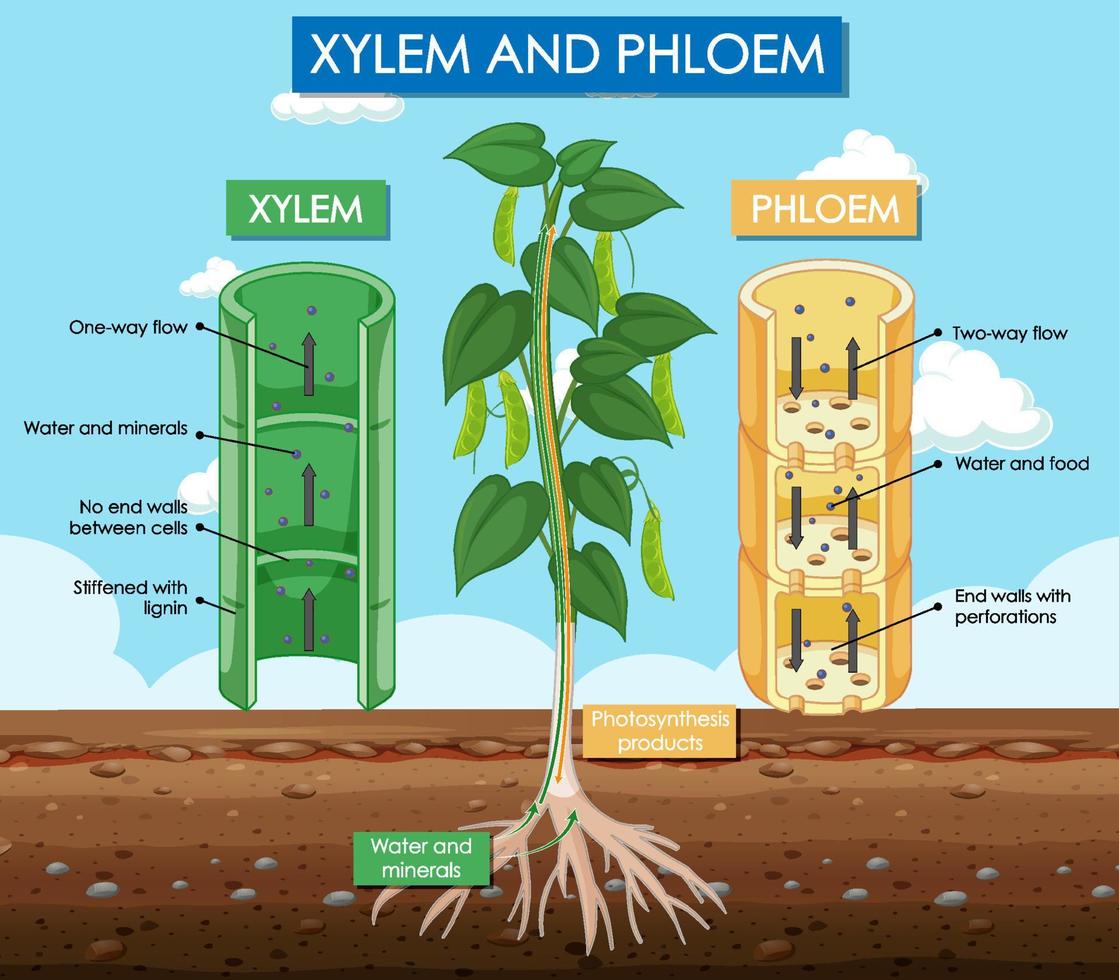How are water and minerals transported in plants?
In plants, water and dissolved minerals are transported through the xylem, a specialized vascular tissue. This transport is driven by transpiration, the evaporation of water from leaves, creating a “suction” that pulls water upwards through the xylem. Additionally, root pressure, the force created by the osmotic movement of water into the xylem in the roots, also contributes to water and mineral transport.
Here’s a more detailed explanation:
1. Water Absorption:
Root hairs, specialized cells in the roots, absorb water and dissolved minerals from the soil through osmosis.
2. Movement into Xylem:
This absorbed water and minerals then move from cell to cell in the root cortex by osmosis until they reach the xylem vessels.
3. Xylem Transport:
The xylem vessels, a continuous network of dead cells, act as pipes that transport water and minerals up the plant stem and into the leaves.
4. Transpiration:
As water evaporates from the leaves through tiny pores called stomata (a process called transpiration), it creates a negative pressure or “suction” in the xylem.
5. Cohesion and Adhesion:
This suction, along with the cohesive (water molecules clinging to each other) and adhesive (water molecules clinging to the xylem walls) properties of water, helps draw water and minerals up the xylem from the roots to the leaves.
6. Root Pressure:
Root pressure, generated by the osmotic movement of water into the xylem in the roots, also contributes to water and mineral transport, particularly at night when transpiration is lower.
Water and minerals are transported through xylem in plant

Water and minerals are transported in plants primarily through the xylem, a specialized vascular tissue. The process is driven by transpiration, the loss of water vapor from leaves, which creates a suction pressure that pulls water and dissolved minerals from the roots up to the leaves and other parts of the plant.
Here’s a more detailed explanation:
1. Root Absorption and Xylem Transport:
Root hairs:
These specialized cells at the root tips absorb water and minerals from the soil through osmosis and active transport.
Xylem:
Water and dissolved minerals enter the xylem, a continuous channel of dead cells that extends from the roots to the leaves and other parts of the plant.
Root pressure:
The entry of water into the xylem cells creates a positive pressure, pushing water upwards, especially at night when transpiration is lower.
2. Transpiration and Transpirational Pull:
Stomata:
Tiny pores on the leaf surface allow water vapor to escape through the process of transpiration.
Transpirational pull:
As water evaporates from the leaf cells, it creates a negative pressure (suction) that pulls water up from the xylem in the stem and roots. This continuous pull from the leaves is the primary driving force for water and mineral movement.
Water cohesion and adhesion:
Water molecules are cohesive (attract each other) and adhere to the walls of the xylem vessels, helping to maintain the continuous column of water being pulled upwards.
3. Key Concepts:
Osmosis:
Water moves from an area of high water concentration (soil) to an area of lower water concentration (root cells).
Active transport:
Root cells actively transport minerals from the soil into the xylem, against their concentration gradient.
Transpiration:
The evaporation of water from leaves is essential for the movement of water and minerals throughout the plant.
In summary: Water and minerals are transported from the roots to the leaves and other parts of the plant through the xylem, driven by transpiration, which creates a suction pressure that pulls water upwards. The process involves osmosis, active transport, and the cohesive and adhesive properties of water.